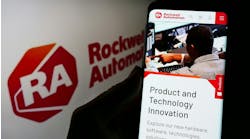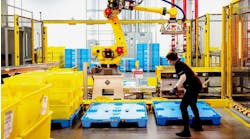At Smart Industry Base Camp, Air Liquide’s Abdul Susnerwala and Bruce Eng will present the case study “Air Liquide Lays Groundwork For Procedural Automation,” detailing the concepts and challenges in the digital transformation of their facilities. Today, the process control engineers preview their Base Camp presentation, touching on technology obsolescence, self-documenting tools and stick-shift cars. Take a look…
Smart Industry: How do you define "procedural automation"?
Air Liquide's Abdul Susnerwala and Bruce Eng
Bruce: Procedural automation is exactly like it sounds…taking existing procedures performed by human operators and automating them. One common approach to accomplish this is adding logic at the process-control level. For us this involves adding and modifying logic within the DCS or PLC that control the plant.
Our approach is instead to perform procedural automation in a higher layer and then interface this with the existing base-layer process control. Rather than modify the existing DCS or PLC logic, we are executing our procedures in higher-level software and then commanding the DCS or PLC using the existing channels that a human operator would use.
The advantages to this approach are many: we can use dedicated software that excels in procedural automation; we can avoid having to retest base-layer control; we can implement procedural automation while the plant is online; and we can standardize our tooling and support of procedural automation even though we have a myriad of different existing DCS and PLC types.
Abdul: Operators' experience and knowledge of the process is the key to starting our plants safely, reliably and efficiently. Successful startup of specific equipment, column or section of the plant depends solely on the expertise of the operator on the shift. In addition having the most experienced operator work every shift does not guarantee process optimization during startup, shutdown and abnormal conditions. Startup and shutdown operating procedures are site-specific and vary vastly from one site to another for the same equipment, column or section of the plant.
There is a different approach; consider an automatic car to a stick-shift. With an automatic car the procedure of shifting gears is automated. Plant-procedure automation automates startup and shutdown procedures for the operation team in the same manner.
Advantages include:
- Knowledge capture
- Best operator available all the time
- Process optimization
Smart Industry: Provide a few examples of the technologies that enable this approach.
Abdul: ISA-88 is the gold standard for the automation of batch processes. Continuous plant processes traditionally have been operated by plant operators. ISA-106 is a good guideline, however no mature tool is available in the market to accomplish the procedure automation of a continuous process.
Bruce: Historically DCSs, PLCs and SCADA systems all served separate functions. Today the feature set of each of these systems is expanding to cover all these capabilities. Many vendors in this space have offerings that can perform procedural automation. In addition, technologies from other industries, such as robotic process automation, have potential for cross-pollination.
Other important technologies are virtualization, which reduces the hardware cost to deploy and support computation infrastructure and OPC DA, and the newer OPC UA, which provide a communication standard that enables interoperability.
Smart Industry: What is one of the gaps that required engineering a new solution in your project?
Abdul: Despite having tons of applications and tools available in the market, none of them are self-documenting and lightweight. Our engineered solution is geared toward a very specific application and fulfills the need to easily capture knowledge, easily implement, self-document and turn the project around quickly.
Bruce: After exploring the existing offerings, I thought about the challenges and inefficiencies of the existing tools. There is a lot of duplicated effort. Usually any procedure requires defining logic, creating a user interface, writing documentation, and setting up testing. Each of these tasks uses a different tool, or if it is combined in one tool it still isn’t well integrated. What we are doing is creating a tailored tool to eliminate this duplicated effort and drive down the engineering costs (both money and time).
Smart Industry: How does tool/technique obsolescence play into this approach?
Bruce: Obsolescence occurs when a better technology comes along. There is a reason that digital streaming is largely replacing CDs. If we embrace technological advancement, we can’t avoid obsolescence, but we can invest in documentation and embrace popular open-source platforms so that when obsolescence occurs the price of migration to a new technology is decreased.
Smart Industry: What is the disconnect in the understanding of terms like sustainability and supportability of an application?
Bruce: Often there is too much weight put on the perception of supportability rather than the actual supportability of a solution. For example, a large company and brand can offer a support contract for their particular platform. Management believes that if they sign this support contract they have chosen a supportable solution. However, an open-source, community-driven platform does not offer any support contract; a Google search for any problem will return thousands of results and online Q&A forums can quickly provide answers to challenging problems at no cost. When actual problems are interfering with production, the latter approach often provides better results.
When it comes to sustainability, a similar dynamic exists. A large company’s guarantee of future/backwards compatibility only exists for as long as that company is solvent; companies that invest too heavily in backwards compatibility are not nimble enough to evolve into the future.
I think the remedy is to improve the dialog between the decision-makers and those with boots on the ground to get a better feel for reality vs. the perception of reality.




